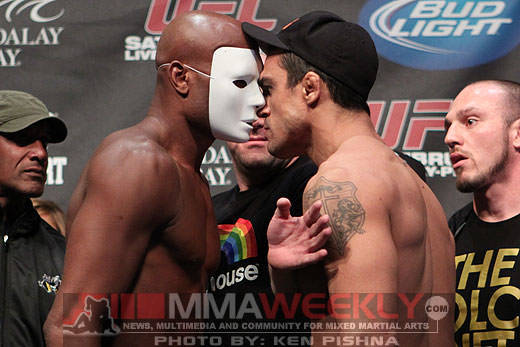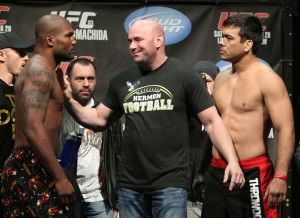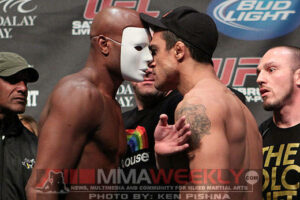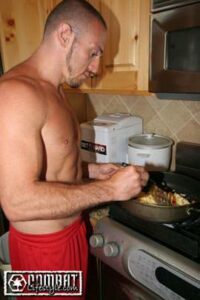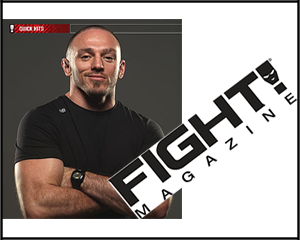
FIGHT MAGAZINE: 'BEHIND THE FIGHT' WITH MIKE DOLCE
FIGHT MAGAZINE: ‘BEHIND THE FIGHT’ WITH MIKE DOLCE
by Terry E. Bush, Fight Magazine
Former power lifter and pro mixed martial artist Mike Dolce knows about making the cut. The author of Three Weeks to Shredded and The Dolce Diet: Living Lean has found a compelling niche in the MMA world—working with fighters to help them win the battle against the scale.
How did you get started helping fighters make weight?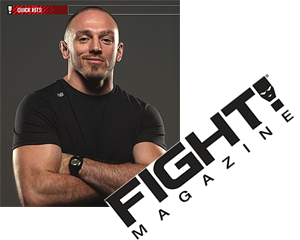
We all eat and breathe and sleep every day, and I just happened to start paying attention to all these variables at a very early age. I’ve been collecting and applying this data my whole life, so it was a natural progression.
What is your job title?
My role is as a coach, which is really how I identify. I’m not just a lifestyle coach or a diet coach or a performance coach. I try to coach the whole system. I try to fill in the cracks where necessary. I’ve been an athlete. I’ve been a fighter. I’ve cut 40 pounds in a week. I know what it’s like. I’ve experienced fighting at a very high professional level. I’ve been a part of that as a teammate and a coach.
You’ve had more than 20 pro MMA fights, which speaks to your level of commitment to the sport. Does this add another layer of understanding that transfers to your clients?
I believe so. I hope so. I like to lead by example. I train when my athletes train. I train right beside my guys. When my athletes cut weight, I cut weight. We do the same things. We eat the same things.
You’re working with some of the top names in MMA—Chael Sonnen, Michael Bisping, Rampage Jackson, Thiago Alves, Vitor Belfort, Gray Maynard, Jake Ellenberger, and Johny Hendricks. Historically, some of those guys have had trouble making weight. What is the process like when a fighter calls to hire you?
It’s absolutely amazing when I get a phone call. I try to see what they need, and if it’s something I feel I’m capable of doing, we meet face to face. I spend some time with them just to see if we get along. I usually shadow them. I go through their day, I watch them eat their meals, and I look in their cabinets and their refrigerator. I go to work with them, I pick up their kids from school with them—it’s a day in their life. Then we’ll have a conversation about changes and adjustments and formulate plans.
Who has been a fighter who you’ve been really proud of with the end result of a transformation you were able to assist with?
Thiago Alves is really high on the list. And Vitor Belfort has a special story. He won the world title when he was 19 years old, and he’s now 35 years old. That’s 16 years of competing at a world-class level. That’s a long time to do that to your body and go through so many training camps and so many wars, so for him to bring me on after he missed weight against Rich Franklin was important for me. They brought me in to help him make 185 pounds, and his next cut was the easiest weight cut of his career. His wife cried and they called me their angel because they were all so nervous about him cutting weight because he’s a big guy and he’s already healthy. He lives on really clean and healthy food, and he and his family live that lifestyle, so for me to be able to come in and make that type of dramatic improvement was really great. I don’t work with an athlete for just one fight, I work with them for their career. I’m not going to leave them for a bigger payday or bigger limelight or any of that stuff. It’s a family. We plan years in advance. I have a seven-year plan with Thiago Alves. It’s a science that’s result-based and data-driven.
What’s on your horizon in the coming months?
I average being on the road six months out of the year. It’s a very erratic lifestyle, so I’m just sort of this floating soul who’s trying to share my knowledge. I keep going and I keep answering the call and the call keeps getting greater. It’s not just athletes—it’s corporations, too. I’m continuing the evolution—just to keep helping and spreading the positive energy and keep pushing that forward.
Article published in FIGHT! Magazine, September 2012
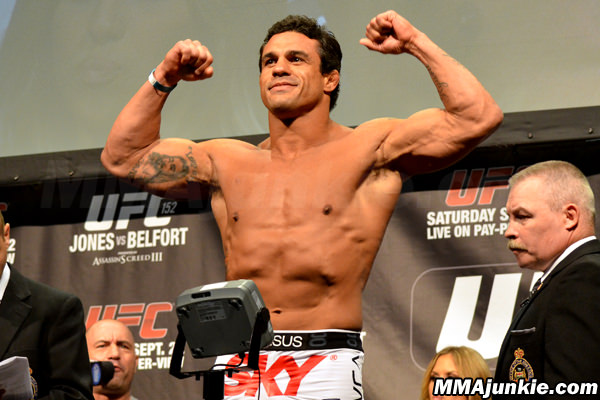
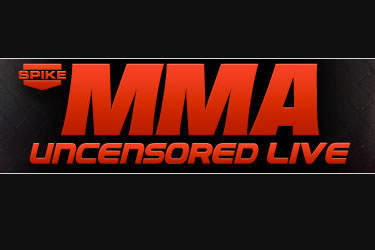



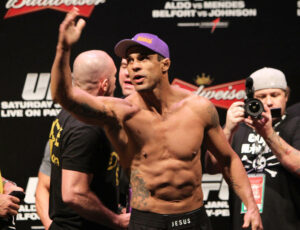 “We wanted the fight regardless,” Dolce said.
“We wanted the fight regardless,” Dolce said.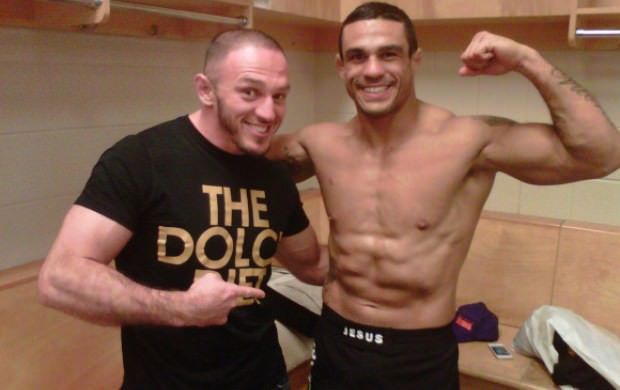
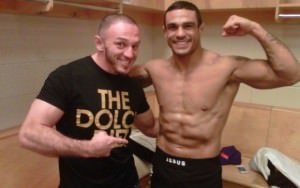
 Normalmente, os atletas do MMA passam por uma semana extenuante às vésperas de suas lutas, tentando cortar peso para bater os limites de suas categorias. Isso não acontece com os clientes de Dolce, que enchem a boca para elogiar seus métodos. O próprio Belfort, que tinha 10kg para perder no início da semana, está pronto para a pesagem, sem abrir mão de suas seis refeições diárias, apenas com pequenas mudanças no seu regime. Segundo Dolce, sua dieta é baseada em alimentos naturais, os chamados “whole foods”, sem produtos processados e refinados ou suplementos alimentícios, e isso faz a diferença.
Normalmente, os atletas do MMA passam por uma semana extenuante às vésperas de suas lutas, tentando cortar peso para bater os limites de suas categorias. Isso não acontece com os clientes de Dolce, que enchem a boca para elogiar seus métodos. O próprio Belfort, que tinha 10kg para perder no início da semana, está pronto para a pesagem, sem abrir mão de suas seis refeições diárias, apenas com pequenas mudanças no seu regime. Segundo Dolce, sua dieta é baseada em alimentos naturais, os chamados “whole foods”, sem produtos processados e refinados ou suplementos alimentícios, e isso faz a diferença.

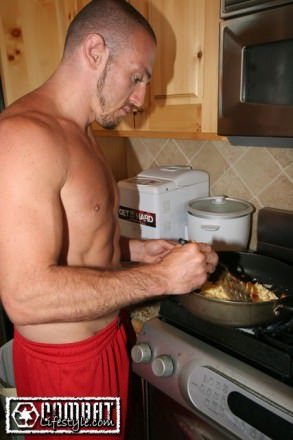 CW: Thiago, for example, you set his day?
CW: Thiago, for example, you set his day?